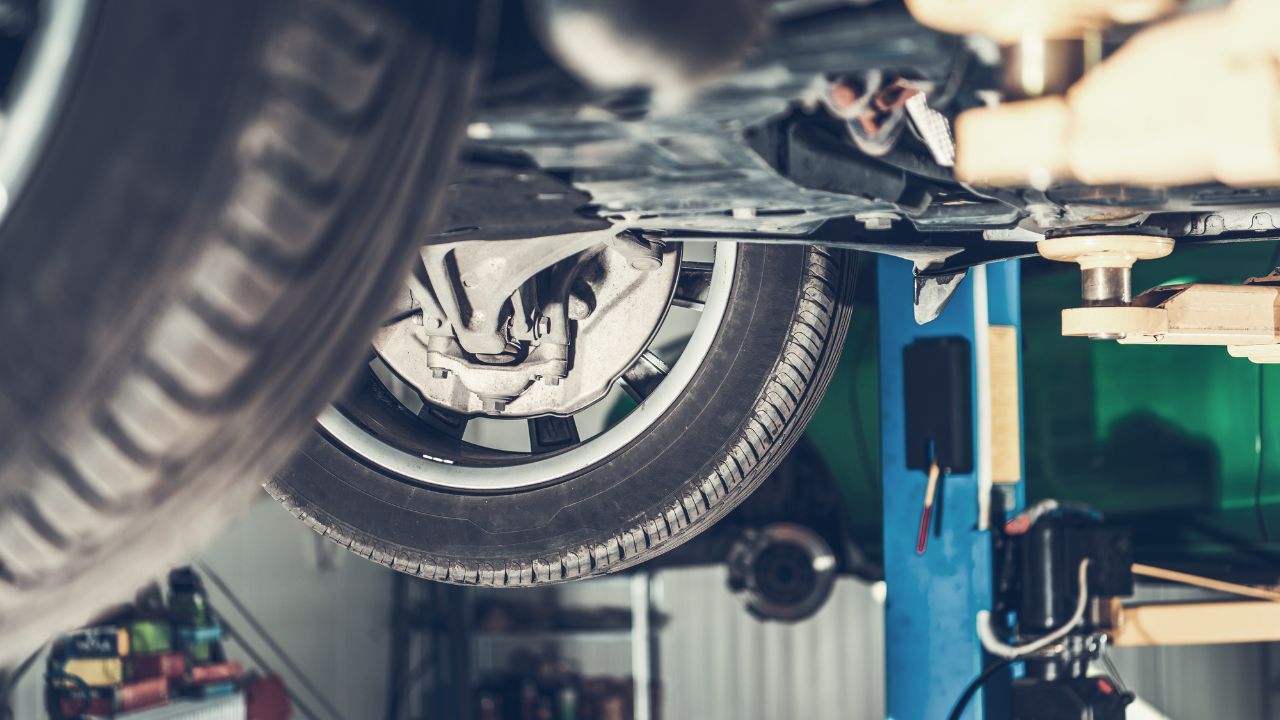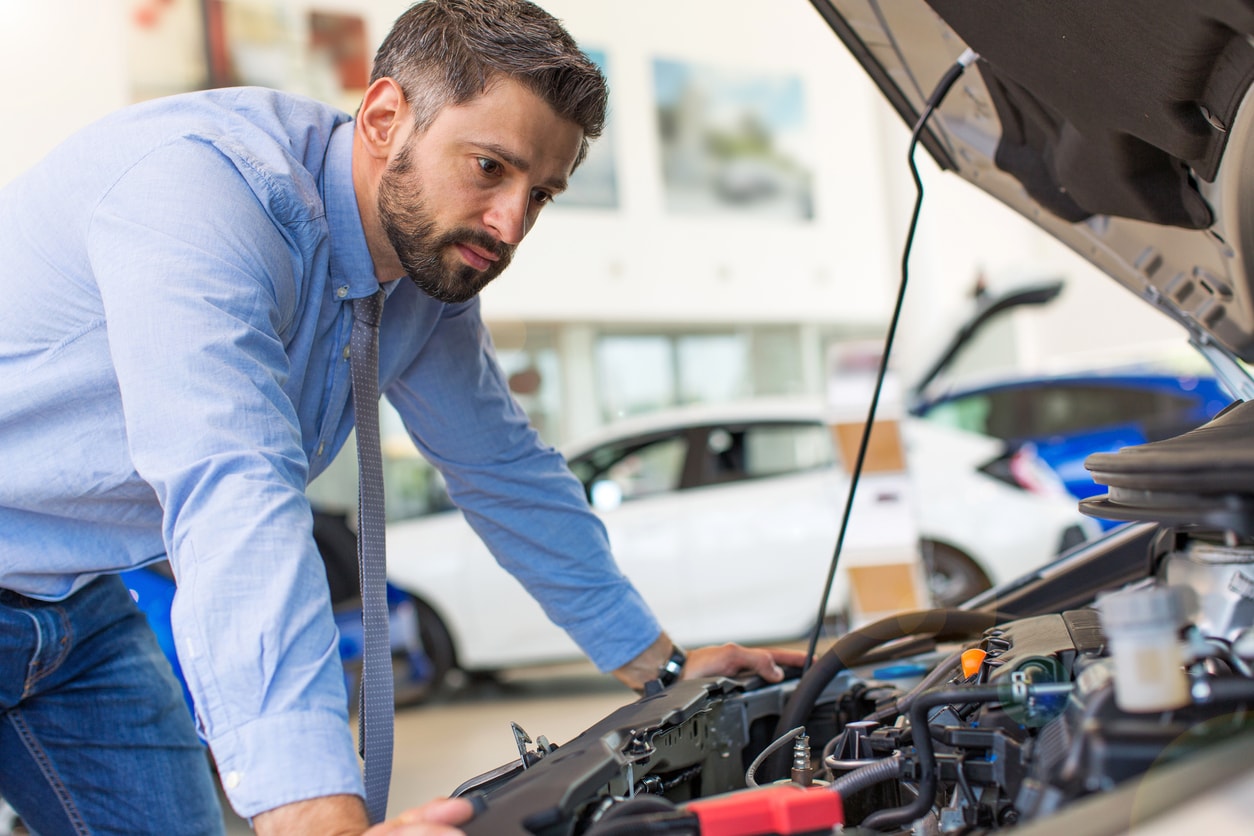
The question, "Does my check engine light need to be on in order for me to get codes?" is answered by the answer. It depends on what problem you are dealing with. To pull codes, the check engine lamp is sufficient to identify non-emissions problems, such low oil pressure. To pull codes, the CEL light is not required if your engine is exhibiting a problem.
A lit check engine light is sufficient to pull codes for problems not related to emissions.
OBD codes may not be able to diagnose every problem. These codes serve as a general indicator of what is causing the Check Engine Light to go on. These codes contain a variety of numbers and letters that indicate problems with the vehicle’s emissions system. Some codes have a single digit, such as "0300", while others contain pairs of numbers ranging from 00 up to 99.

The good news? You can check these codes easily yourself. Most vehicles have an onboard computer which stores fault codes. You can read and interpret these codes using either a Bluetooth-powered phone or an app. This information is invaluable and can save you time and money. If you're unsure of what these codes mean, consult your local mechanic or auto parts store.
Low oil pressure
When your vehicle is in motion, the low oil pressure check-engine light will illuminate. If your oil pressure is lower than 5-10 PSI at idle, it may make a loud clicking sound. This is a sign that your oil pressure sensor is not working properly. Continuing to drive your vehicle with low oil pressure can result in costly engine damage. It is a good idea to take your vehicle to the mechanic if your engine oil pressure drops below dangerously low levels.
To identify what is causing your engine to display this error code, you should first check the level of oil in the vehicle. If the oil looks clean, it's worth checking the oil level. Check the maintenance history of your vehicle in order to determine whether there are any issues. To confirm the proper oil pressure in your motor, you can also access your oil pressure gauge. It is also important to check the wiring, connectors and other components.
Engine failure
If your engine code is misfiring, it means that the combustion process is not working properly. The misfire may be causing your car to jerk when you drive it. This could be due to a malfunction in either the oxygen sensor, or the mass airflow sensor. A malfunction in fuel delivery could also be a possible cause. It is possible to diagnose this problem cheaply. The best way to determine the exact cause of the problem is to use a diagnostic troublecode reader.

Incorrect fuel/air mixtures are often the cause of misfiring problems. A malfunctioning oxygen sensor or inefficient single injector can cause misfiring. It is important to inspect the engine compartment thoroughly in order to find the cause. Common symptoms include minor backfires and inconsistent engine revs.
FAQ
Is being an auto mechanic a promising career choice?
The automotive industry is full of exciting opportunities for those who are dedicated to excellence. Working hard and learning from others is the best way to be successful in this field.
Excellent communication skills are essential as you will spend most of the time speaking to customers or other employees. It is important that you are willing to travel, work long hours and be able to commute.
Consider taking classes at local universities or community colleges if your goal is to pursue a career in the automotive industry. Many schools have programs that are specifically tailored for students who are interested in automotive sales, repair, and customer service.
If you decide to pursue a degree, you should study mechanical engineering. You can earn a bachelor's in as little four years.
Many companies will also hire graduates right out of school. It's a smart idea to begin looking for work while you have the opportunity to study part-time.
After you have completed your education, you will likely need some training to be able to work as an automotive technician.
This means you'll need to pass exams such as the Automotive Service Excellence (ASE) certification exam. This test covers engine maintenance and brakes as well as suspension.
Once you have passed the ASE Test, you are eligible to apply for a National Institute for Automotive Service Excellence License.
A license permits you to repair private vehicles. You will be compensated based on how many services you performed.
Not all states require licensing. However, if you plan to work outside your home state, you'll need to obtain a license.
Some states don’t issue licenses until a certain amount has been completed. If you are one of these people, you might need to look for another alternative.
To work as an automotive mechanic, do I need a degree? Can I study part-time?
Although a degree is not necessary, it can be helpful. Most employers prefer candidates who have studied for a full degree rather than those who haven't. It shows that you've put the effort in and have done everything possible to succeed.
This doesn't necessarily mean you can't continue to work while studying. Some universities let students complete their coursework in the summer and then continue their studies during the school year. Students can also take classes part time throughout the academic year.
Does it really matter what college I choose?
It's not true. There's no difference between colleges regarding getting into the automotive industry. There are some schools that offer more specific programs than others.
What is the length of an automotive training course?
A course in automotive lasts three years.
The first year of your training is devoted to theory. You will learn all about cars. The second year is dedicated to practical training, where you will learn how to fix cars, drive them, and do other jobs around the car. The last year is spent at a local shop, where you will get practical experience with real-world problems.
Statistics
- 52% of Mechanics in the United States think their salaries are enough for the cost of living in their area. (indeed.com)
- According to the BLS, total auto technician employment is expected to exceed 705,000 by 2030. (uti.edu)
- Apprentice mechanics earn significantly less hourly than mechanics who have completed training, with a median wage of approximately $14.50 an hour, according to PayScale. (jobhero.com)
External Links
How To
How to properly diagnose your car for repair
The symptoms of your vehicle are the first thing you need to look at in order to determine whether it is in dire need of repairs. Follow these steps to properly diagnose your vehicle.
-
Check engine lights. You should inspect the dashboard lights, such as the engine light indicator and the oil pressure gauge. Also, check the battery light indicator. You may have a problem with your vehicle if any of the indicators are flashing for more than a few days.
-
Examine the treads of the tires. If the tires are worn out, they could cause problems with handling and braking. It is also important to inspect the wheel treads. They should be clean, and they should be smooth. To do this, remove the wheels and take them out. Use a flashlight to see how well the treads are worn.
-
You should always monitor the level brake fluid. It is important to keep track of how much brake fluid you have in your car. You can ensure that your brakes are working properly by monitoring the level of brake fluid in your vehicle. Your brakes may fail if the brake fluid level drops.
-
Make sure to test the suspension system. Most vehicles have a suspension system that absorbs shocks and vibrations. It provides better control and allows smoother acceleration and deceleration. You might notice a wobbly feeling or uncontrollable shaking in your vehicle if it has a problem with its suspension. If you are unsure if your vehicle is suffering from a suspension problem, put weight on the front and rear axles to check the movement.
-
Take a look at the steering column. The steering columns are what connect the steering knob to the rest. Steering columns can be damaged by accidents. You should replace the steering column if it is loose or weak.
-
The exhaust pipe should be observed. Exhaust pipes move gases from combustion chamber to atmosphere. Your cabin will be effected if your exhaust pipe cracks or leaks. Also, if your tailpipe is bent, you should fix it immediately.
-
Take a look at the underside of your hood. To check for unusualities, look under the hood. Fluids could be leaking from your engine. A professional technician should be contacted if your engine compartment emits an unusual smell.
-
Make sure to check the air filter. The outside environment collects dust and other particles in the vehicle's filter. Your vehicle will run less well if it has a dirty filter. Replace your air filter regularly.
-
Verify the fan belt. Your vehicle's fanbel connects the engine and transmission. If the fanbel breaks, your engine won't turn. Replacing the belt is simple. All you need is a screwdriver and some pliers.
-
The radiator hose and hoses should be checked. The radiator hose carries water from the radiator to the engine. It can cause hot liquid to leak onto the engine if it is damaged or cracked. The hose can be repaired with a pair or needle-nosepliers, and a wire brush.
-
Make sure you have the windshield wipers checked. Windshield wipers use electricity for snow and rain removal. If they stop working they could leave streaks behind on your window glass. To fix the problem, simply change the washer fluid.
-
You should inspect the cables. Batteries provide power to electrical systems inside your car. Always disconnect the negative wire before you replace batteries. Failure to do so can damage your alternator.
-
Be sure to check your headlights. Headlights help you see the road ahead. It can lead to poor visibility if they aren't working properly. To check if the bulbs have gone out, you can inspect them.
-
Always check your lights. If you approach other drivers at night, lights will warn them. One that doesn't work could cause you to be distracted, and possibly lead to an injury.
-
Inspect your brakes. Brakes will reduce the speed of your car in case of an accident. If your brakes aren't working properly, you may lose control and crash into other cars.
-
Change the oil. Oil keeps your engine lubricated. It prevents metal parts from rusting too quickly. It is recommended to change the oil once a month.